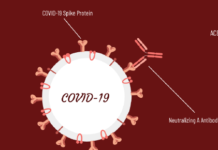Hyperimmunoglobulin-E Syndrome may seem like a made up word, but it is a very real medical condition. My 10-year-old brother Joseph is one of 251 people diagnosed with Hyperimmunoglobulin-E Syndrome, also known as Job’s Syndrome or HIgE.
Joe has had severe eczema all his life, many allergies, and has lost three teeth. He also gets frequently sick with staph, strep, and pneumonia, and is admitted to the hospital several times a year. He misses a lot of school because he is frequently, and he spends a lot of his time resting or at doctor appointments. His extensive team of doctors came up with this diagnosis about a year ago, but since it is so rare, it took his doctors a very long time to figure out why these things were happening to him.
“I’m happy that my doctors know what I have, but I don’t like having it and not having a very good treatment,” says Joseph. “I hope that they find something eventually. It makes me mad that my problems don’t let me do the things a lot of other people can do. I can’t eat a lot of foods because of my allergies and I can’t play sports because of my asthma. There are lots of things I wish I could do, but I can’t do them with HIgE.”
The National Human Genome Research Institute describes HIgE as a genetic disorder that increases the production of Immunoglobulin-E (IgE) in the body, as well as affecting the function of the immune system. Immunoglobulins are proteins called antibodies that fight off bacteria, infection, parasites, and other body invaders. IgE’s specifically fight off allergens. If there are too many IgE’s in a person’s body, it causes many harmful problems, such as severe skin conditions like eczema or psoriasis, infections of the lungs, bone problems like scoliosis, and lack of tooth loss. The person also becomes more susceptible to bacterial infections such as strep, staph, and pneumonia. All of these problems can be life-long and are difficult to live with. It mainly affects children and younger adolescents, but can occasionally carry on later in life.
Since IgE’s are mainly responsible for fighting allergies and Joe has so many, his reactions are much different than most people. “The levels of IgE for people without Hyperimmunoglobulin-E Syndrome is generally around 125. For someone with the disorder, they are much higher.
“Joe’s count is currently at more than 40,000, and is continuing to increase.” says Dr. Elaine Siegfried, the head of pediatric dermatology at Cardinal Glennon Hospital in St. Louis. “No one really knows exactly why the body can produce such high levels of IgE, and it’s hard to tell why they make the body act this way. It’s something that we have to experiment and work with blindly,” says Siegfried.
The high levels of IgE’s cause his body to overreact to things he is allergic to and treat everything else (even the good bacteria,) as a typical antigen. “It’s like his immune system is made up of stepping stones, and a couple of his are either missing or off balance,” says Tracy Hogan, Joseph’s mother who has spoken to many, many doctors about Joe’s rare disorder. “His body is always fighting, and his immune system ends up counter-reacting with itself.”
The overreaction causes Joe to become immune to different antibiotic and medical treatments. When his body becomes immune to one medication, his doctors try stronger ones and he ends up becoming immune to them too. “At this point, they haven’t found anything stronger they can use, so nothing works for him. His immune system warriors are stronger than the toughest medicine they have,” says Tracy.
There is no known cure for HIgE, and professionals in the medical field are still working to find treatment that is successful in helping symptoms. “When trying to treat this, it is difficult because we don’t know much about it. Most of the time, we just try one thing and see if it works, then move onto whatever is next,” says Siegfried.
When someone with this disease becomes ill, doctors have to treat the individual symptoms because they can’t actually treat the disorder. This can cause the person to be admitted to the hospital multiple times because of the severity of their illnesses. “There isn’t any kind of common treatment because his immune system can’t be rebuilt,” says Mrs. Hogan.
Although there is no cure yet, researchers at the National Institutes of Health (NIH) have started to uncovered the gene that is affected by this disorder. This gene is known as Signal Transducer and Activator of Transcription 3, or STAT3. The STAT3 gene plays a significant role in many body systems, and it is an essential gene. STAT3 proteins produce white blood cells at a different rate, produce different amounts of immune-enhancing chemicals, and kill body invaders at a different rate.
“STAT3 is the key [to HIgE], and it can become a really powerful tool to dissect other aspects of immunity at a molecular and functional level,” says Steven M. Holland, chief of NIH’s Laboratory of Clinical Infectious Diseases, and a key player in finding about this gene.
Joe has a very large and experienced team of doctors that have been specially put together just for him. These specialists come from many places around St. Louis. They all collaborate and work hard to help find a way to help him overcome HIgE Syndrome, but so far they haven’t had much luck in the way of treatment. He has undergone IVIG therapy, which is where the plasma in his blood is increased by putting it through an IV. They are currently going to start giving him Gamma Interferon therapy in the form of daily shots. This treatment activates different immune cells in his body to help boost his immune system’s function.
| Related story: Orphan Diseases Get Noticed |
Joe has had to adapt to living with so many health problems, and it prevents them from doing many things other people can do. “I don’t want anyone to get this disease because it takes a lot away from life,” says Joe. “Maybe one day there will be a cure so that everyone who has it can be healthy and happy.”Nicole Orazi

This work is licensed under a Creative Commons Attribution-NonCommercial-NoDerivs 3.0 Unported License














I am 51 Yrs and I understood HIES only afetr I was 47 Yrs ! I have survived numerous miracles and request you to have faith … My IgE was reported at 36,600 about 4 years back …. my suspected NIH score would be 40 and I live with almost all symptoms of HIES !!! You may write to me anytime and I shall be glad to respond with whatever we have understood of Job’s !! I wish Joe All the very Best and you are in Capable hands of a Team of Specialists !! Cheers !!